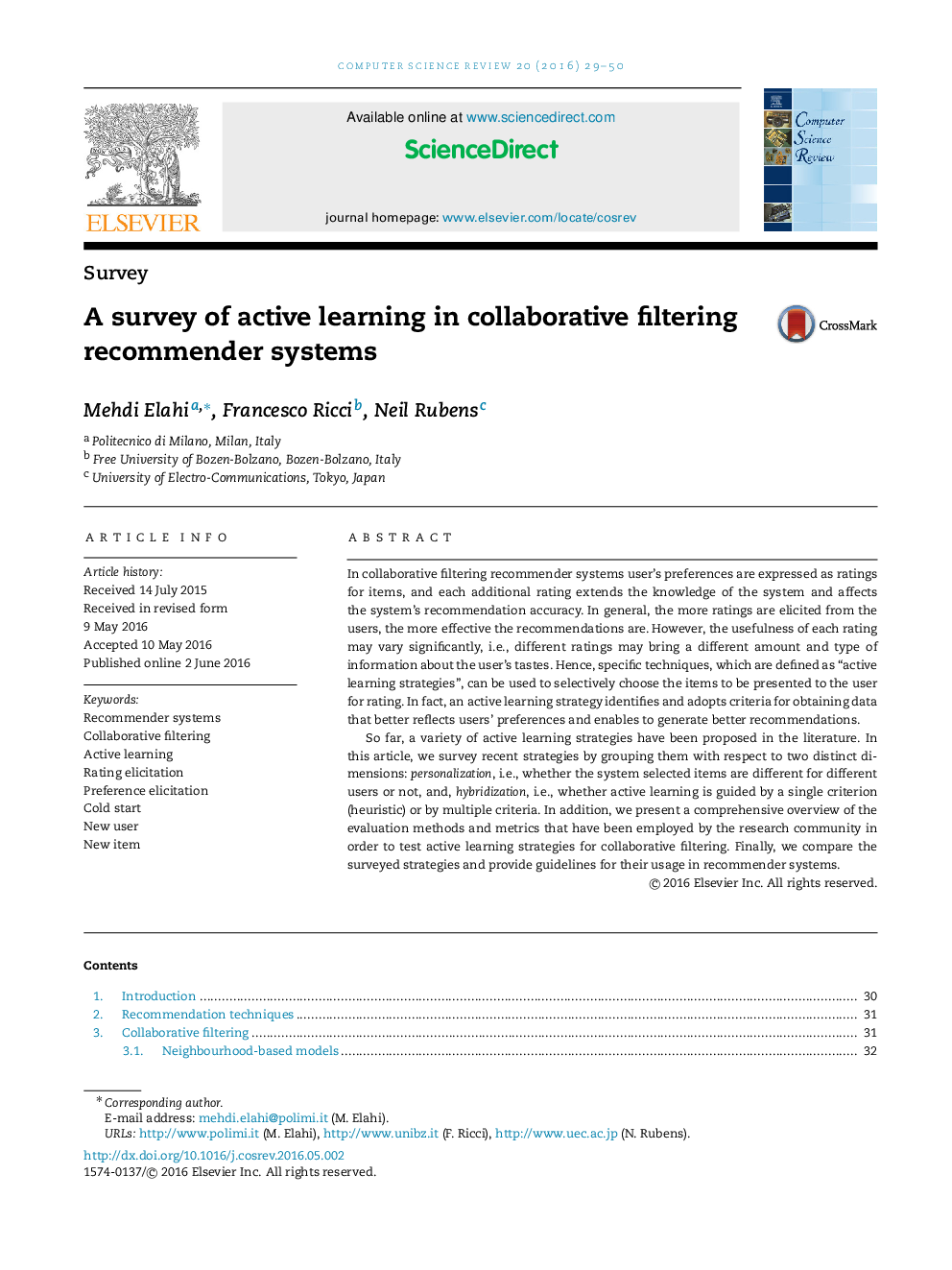| Article ID | Journal | Published Year | Pages | File Type |
|---|---|---|---|---|
| 470566 | Computer Science Review | 2016 | 22 Pages |
In collaborative filtering recommender systems user’s preferences are expressed as ratings for items, and each additional rating extends the knowledge of the system and affects the system’s recommendation accuracy. In general, the more ratings are elicited from the users, the more effective the recommendations are. However, the usefulness of each rating may vary significantly, i.e., different ratings may bring a different amount and type of information about the user’s tastes. Hence, specific techniques, which are defined as “active learning strategies”, can be used to selectively choose the items to be presented to the user for rating. In fact, an active learning strategy identifies and adopts criteria for obtaining data that better reflects users’ preferences and enables to generate better recommendations.So far, a variety of active learning strategies have been proposed in the literature. In this article, we survey recent strategies by grouping them with respect to two distinct dimensions: personalization, i.e., whether the system selected items are different for different users or not, and, hybridization, i.e., whether active learning is guided by a single criterion (heuristic) or by multiple criteria. In addition, we present a comprehensive overview of the evaluation methods and metrics that have been employed by the research community in order to test active learning strategies for collaborative filtering. Finally, we compare the surveyed strategies and provide guidelines for their usage in recommender systems.
